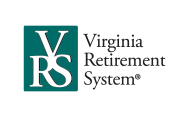Defined Benefit Vesting |
Defined benefit vesting is the minimum length of service needed to qualify for a retirement benefit. You become vested under the defined benefit component of the Hybrid Retirement Plan when you have at least five years (60 months) of service credit. Once you are vested, you are eligible for a retirement benefit if you meet the age and service requirements for your plan. |
|---|---|
Defined Contribution Vesting |
Upon retiring or leaving employment, you can withdraw 100% of your Hybrid 457 Deferred Compensation Plan account balance and any contributions you made to the Hybrid 401(a) Cash Match Plan, plus any net investment earnings on your contributions. Withdrawals of your 401(a) employer contributions and net investment earnings on employer contributions are subject to the following vesting schedule:
|
Average Final Compensation |
Average final compensation is used in the retirement formula in the defined benefit component of the plan. It is the average of your 60 consecutive months of highest creditable compensation as a covered employee. |
Service Retirement Multiplier |
A retirement multiplier is a factor that determines how much of your average final compensation will be used to calculate your retirement benefit under the defined benefit component. The retirement multiplier under the defined benefit component of the Hybrid Retirement Plan is 1.0%. If your membership date is before January 1, 2014, and you elected to transfer to the Hybrid Retirement Plan from VRS Plan 1 or VRS Plan 2, the applicable multipliers for those plans will be used to calculate your retirement benefit for service earned, purchased or granted while a member of those plans. Your retirement multiplier will be 1.0% for service earned, purchased or granted while a member of the Hybrid Retirement Plan. |
Disability Coverage |
Eligible political subdivision and school division members (including opt-ins) participate in the Virginia Local Disability Program (VLDP) unless their local governing body provides an employer-paid comparable plan for members. State employees in the Hybrid Retirement Plan are covered under the Virginia Sickness and Disability Program (VSDP). State employees (with the exception of Judicial Retirement Plan members) participating in the Hybrid Retirement Plan are not eligible for disability retirement. |
Service Credit |
Under the defined benefit component of the Hybrid Retirement Plan, you earn service credit for each month you are reported in a VRS-covered position. It may also include credit for prior service you have purchased or additional service credit granted by an employer. Service credit is one of the factors used to calculate the VRS retirement benefit under the defined benefit component and determine eligibility for retiree benefits. Under the defined contribution component, service credit is used to determine the vesting schedule for when you can withdraw the employer contribution portion of the plan. |
Purchase of Prior Service |
You may be able to purchase service from previous public employment, active duty military service, an eligible period of leave or VRS refunded service as service credit in your plan. Purchasing prior service credit counts toward vesting and eligibility for retirement and the health insurance credit. Only active members in VRS-covered positions are eligible to purchase prior service. |
Unreduced Retirement Eligibility |
You become eligible for an unreduced retirement benefit under the defined benefit component when you reach your normal Social Security retirement age and have at least five years (60 months) of service credit or when your age and service equal 90 (Rule of 90). Example: Age 60 with 30 years of service credit. For the defined contribution component, you are eligible to receive distributions upon leaving employment, subject to restrictions. |
Reduced Retirement Eligibility |
You are eligible for a reduced benefit under the defined benefit component beginning at age 60 with at least five years (60 months) of service credit. For the defined contribution component, you are eligible to receive distributions upon leaving employment, subject to restrictions. |
Cost-of-Living Adjustment (COLA) in Retirement |
July 1, 2024, COLA: 3.0% You receive cost-of-living adjustments (COLAs) to your retirement benefit to assist with rising costs. The COLA is based on the Consumer Price Index for all Urban Consumers (CPI-U), published by the U.S. Bureau of Labor Statistics. The COLA matches the first 2% increase in the CPI-U and half of any additional increase (up to 2%), for a maximum COLA of 3%. During years of no inflation or deflation, the COLA will be 0%. The COLA is not applicable to the defined contribution component. EligibilityIf you retire with an unreduced benefit or with a reduced benefit with at least 20 years of service credit, the COLA will go into effect on July 1 after one full calendar year (January 1 to December 31) from your retirement date. If you retire with a reduced benefit with less than 20 years of service credit, the COLA will go into effect on July 1 after one calendar year (January 1 to December 31) from the date you would have become eligible for an unreduced benefit. |
Resource Center for VRS Employers: Hybrid Retirement Plan
Plan Provisions
June 18, 2021
